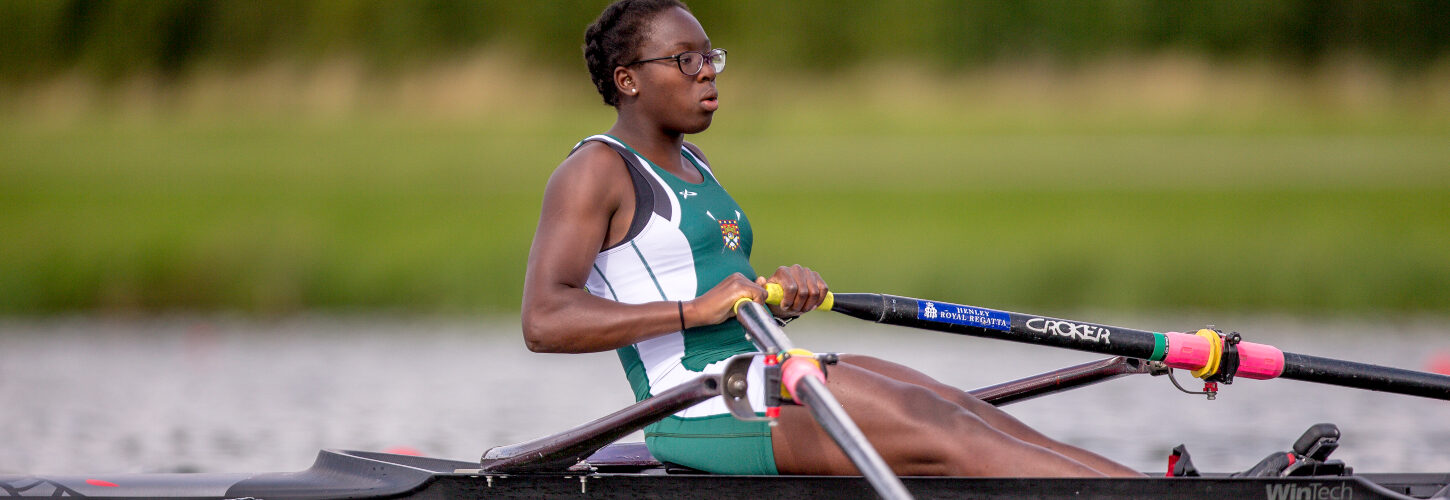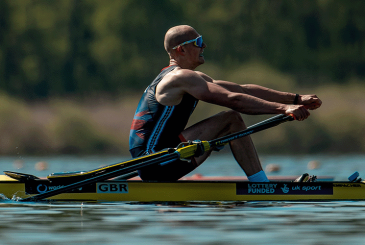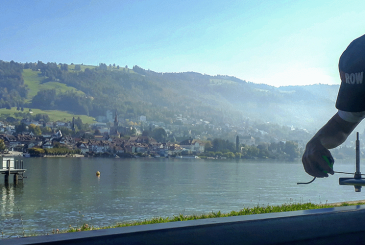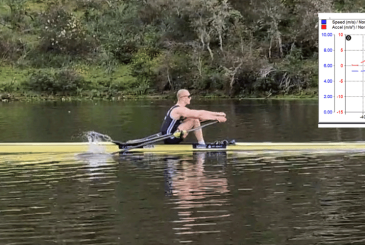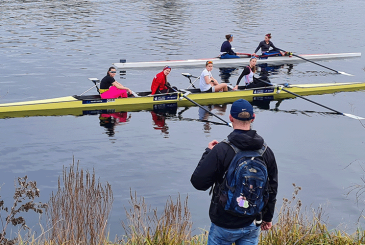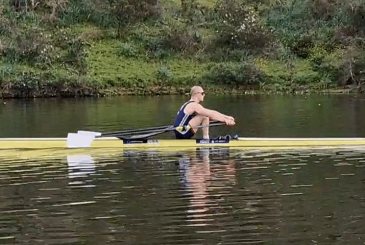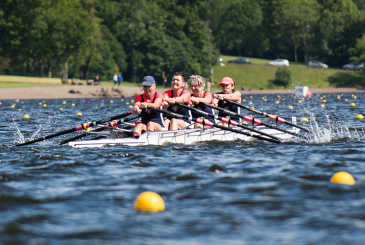Is it better to pause at the finish or not? Coach consultant Robin Williams considers the debate, reflecting on the pros and cons
Our recent set of articles have covered some of the important broad issues to do with technique, such as creating a conducive training environment, coaching styles, and using winter training well to create your foundations for next season. These give us a framework, but it is now time to really put some detail into our technique.
I am diving straight in with one of the hot topics to do with the finish: to pause or not to pause? Ryan Demaine, of Headington School BC, also mentioned it in a British Rowing online webinar, and whenever I run coaches’ workshops there is a polarisation of viewpoints on this issue. “Which should it be – pause or not?” coaches demand, almost angrily. It’s time to try and clear up the confusion and settle the debate.
A question of choice
Everyone has seen paused finishes with some of the top international crews and it has spilled down into clubs, universities, and schools as a result. We can see what they are doing but don’t always know why, hence the arguments.
Should we follow the example? Have they unlocked some special key to boat speed thus far missed by everyone else? Or perhaps it only applies to them, the full-timers, the world-class boats?
Well, the first point to make is that it does not need to be an either/or choice at all, in my view: the differences between a paused finish and a moving one pretty much disappear above rate 22/24.
At race rate they look the same, whichever school of thought prevails at training rates. At the 2018 World Championships in Plovdiv, for instance, the Australian men’s eight and the USA paddled near each other one day, the Aussies pausing for almost a second at the finish, in contrast to the USA crew.
When they raced each other in in the first heat they were a hair’s breadth apart and both rowed 5:19! So, it is not a racing issue – it’s to do with training.
Paused versus flowing finishes
Why do it at all and what are the merits of each style? The usual arguments for keeping the hands moving at the back turn are that it helps keep smooth movements and sets up the basic hands/body/slide sequence in the recovery phase by clearing the hands fluently. Additionally, peak hull speed occurs after the finish, during the recovery, so why would anyone want to interrupt this natural process by adding a pause?
The handle speed is high at the finish and the old adage of “speed ‘in’ equals speed ‘out’” is favoured by many – this helps rowers understand the importance of seamless movements, how to create rhythm and generally move with the boat. All of that has merit, but there is a but. These benefits are all to do with ‘feel’ things and quality of movement, but do not necessarily address the ‘mechanical’ problems we often see.
Technical errors
The finish can hide many faults, and some not so ‘hidden’ ones! Blades washing out, people leaning away, dropped wrists, feathering in the water, blades collapsing on the water, body weight tipping off the back of the seat, or the opposite: chests pulling in over the handle. Pulling against the shoes, slumping and losing posture, being out of time with others, snagging the blade. It’s a long list!
Finishing a stroke well is not such an easy thing. The problem is that it can be difficult to correct these problems if the coach is always saying: ‘Move your hands, keep the handle moving’, and not giving you the time to figure out the cure.
In this situation, the coach might also see that something needs to be done and call for a ‘single strokes’ exercise. It’s something we’ve done for years and is a well-accepted drill.
It can help define a clear reference point for the crew and give a timing opportunity to be together before moving into the recovery.
Aha! Now we have it – the origins of paused finishes. Giving people more time is one of the reasons for doing single strokes, and the paused finish style is a continuous version, albeit with a shorter pause. Some coaches feel this helps create better definition and togetherness at low rates, and a stronger end to the drive. But, ultimately, we want both aspects, sound technique AND flowing, relaxed rhythm. So, will a 10 stroke finishes drill fix the problem? Probably not. You need a lot more practice than that. You could keep repeating drills or perhaps incorporate the essence of single strokes into continuous UT training in the way described. Before deciding which style suits you, let’s consider what we can achieve with the finish.
“A well-pressed finish optimises the available drive on the boat, and we need to keep this priority”
Seven reasons why the finish is so critical
The finish is an important reference point in the stroke cycle. If a crew is absolutely together here, there is a better chance they can be synchronised through all the other parts of the stroke and not lose each other at the front end.
1. Balance
The legs are flat and weight is low in the boat, so it is the easiest part of the stroke cycle to ensure balance and feel secure. The geometry is strong. By comparison, the front-end balance is trickier and technically more challenging.
2. Visual
Everything is in view: your blade, feet, hands, and crew. Being able to see them is a useful reference. Conversely, at the front end, your feet, spoon, seat, are out of sight and it’s more about feeling than seeing.
3. Mass
The finish is the only point in the full stroke cycle where, momentarily, all three masses are linked together, in the same direction – bodies, blades, and boat. The rower has completed his movements, the oar has finished its arc; both are stationary relative to the hull, so all three masses are connected, and travelling forwards together.
4. Timing
Our brains need this moment to register the speed we have created by the end of the drive. It is how we subconsciously sense the correct timing for the hands/body and slide for the recovery. We want to be ‘with the hull’ – not sluggish and getting left behind, nor chasing and getting ahead, but in balance with it.
5. Time
So whichever finish style you follow, there needs to be some time here, not a rush. It is a moment of respite, a signal for muscles to stop working and relax.
6. Oar pressure
Remember also that, during the drive, the oar is under load and the shaft is flexed – particularly the outboard section. Even when the rower finishes his stroke, the oar has not quite. When the handle reaches the body the outboard part of the oar still has energy and needs a few milliseconds for the spoon to release before the handle can move away. Many people move the handle before the spoon has properly finished (and then kick up water or upset the boat).
7. Thinking
A well-pressed finish optimises the available drive on the boat, and we need to keep this priority. If we lose the finish in the interest of moving hands away, then we begin to lose hull speed.
Dynamics
A further potential merit of this style is the way it sets up the recovery. A free-moving slide can create a useful elastic change of direction at the front, and a dynamic leg drive. The Australian ‘Oarsome Foursome’ of the 1990s did this extremely well.
I will look at dynamics more next time, but taking the seven points from above, these can be taught and understood well using the pressed finish approach, I feel.
With the successful Heather Stanning and Helen Glover women’s pair, we did this a lot in the early stages because we needed to sort out some faults with that part of the stroke. However, once we were happy with the mechanics of that part, we had to work on their movement skills at medium to high rates which they would need for racing. So, both elements are needed. It is not an either/or debate.
Some coaches I speak to suggest that teaching juniors to ‘stop’ at the finish is not a good thing. They prioritise teaching rhythm and the holistic stroke cycle at that age. Others take the opposite view. I respect both views because it depends on the agenda the coach has set for that stage of training. As long as everyone understands what is being sought there should not be confusion, and ultimately all aspects of the finish need to be mastered.
Press, don’t pause
‘Pause’ does seem to carry negative associations for many rowers and coaches, and perhaps leads to the disagreements. It may sound pedantic but avoiding the word ‘pause’ altogether might help, and using ‘pressed’ finishes instead, or something equivalent. ‘Pressed’ implies good, diligent and full extension of legs and backs. It suggests a clean blade with completion of drive movements rather than cutting or chasing the finish. At the same time, it does not prevent fluid hand movements after the press is finished.
It is all just a debate about handle time at the finish, and whether it should be a lot, a little, or none at all. Just how much time depends on whether you want to address low-rate mechanics or higher rate fluidity, and ‘pressed’ allows athletes and coach to achieve both aims!
Some useful videos to see the range of interpretations in crews include these examples from Croatia’s Sinković brothers below, the outstanding 2018 eight from St Paul’s School as well as the Australian men’s four at the 2018 World Rowing Championships – look out for the big pause!
If you’d like to watch Robin Williams talking about his thoughts on the finish then you can here. For more expert advice on technique, you can follow Robin on Facebook.
Photo: Drew Smith


